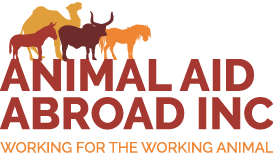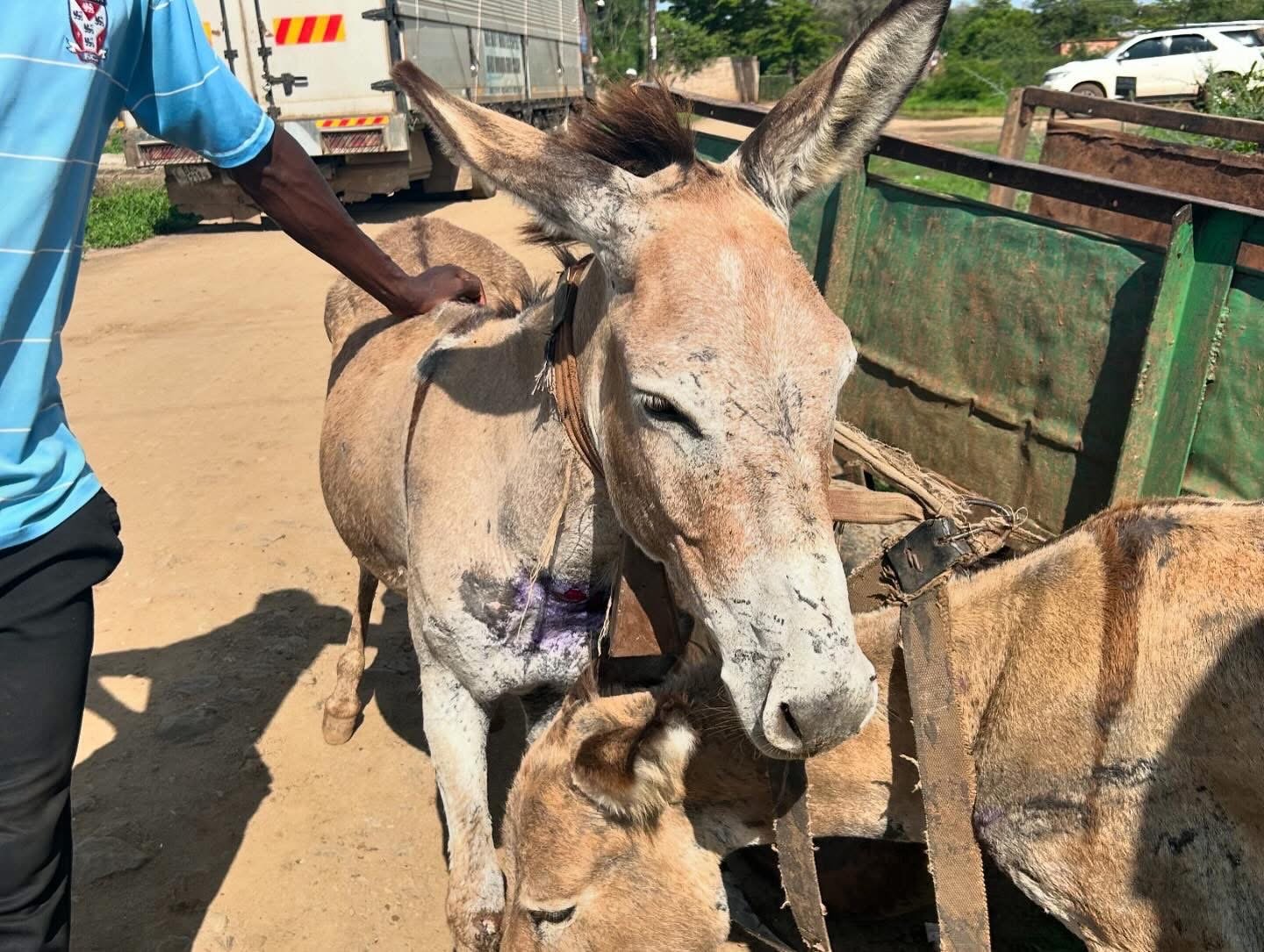Three More Abused Donkeys Rescued in Zambia
In Zambia, our partner group Zambezi Working Donkey Project (ZWDP) saw 240 working donkeys during January. They also rescued three more donkeys in need. This vital work can only be completed due to your generous donations. Please read on to see how your invaluable support is changing the lives of donkeys in Zambia.
In January, ZWDP visited seven villages, where 128 donkeys were given preventative treatment against internal and external parasites. Thirty-nine families were engaged in education too.
The team also conducted two mobile clinic outreaches. One was held at a nearby local market called Libuyu and another was held in a village called Maunga.
At Libuyu Market, ZWDP saw a number of donkeys in need of veterinary care whose owners were not willing to release them for treatment. Many of these owners are hesitant to hand over their donkeys because they feel it takes too long for donkeys to recover from wounds, and they depend on these animals for their livelihoods.
In Maunga, 53 donkeys were dipped, 35 were dewormed and 24 donkeys received basic wound treatment. This outreach clinic was conducted at a school, which gave the team an opportunity to educate school children about general animal welfare. The ZWDP team handed out fliers to pupils and teachers on caring for working donkeys. It was a busy and fun-filled experience and the people of Maunga are looking forward to ZWDP’s next visit.
On January 13th, the team also welcomed their second veterinary student from the University of Zambia Veterinary School. Mirriam Kapiya, a 4th year clinical student, helped provide veterinary care to ZWDP’s rescued donkeys under supervision. She accompanied the ZWDP team on mobile clinic outreach programs and was exposed to the realities of working donkey welfare in this region.
ZWDP’s Director and Program Coordinator held a meeting with the Zambia Police at the start of the year to generate strategies to help abused working donkeys. In the meeting, several resolutions were made, including follow-up visits for previously abused donkeys. These follow-up visits will alert the communities in which donkeys were previously abused about the reality of donkey abuse in their areas. It will also encourage people to report abusers. Another discussion clarified the need for written reports from the Veterinary Department and legal documentation from the police regarding abuse cases. ZWDP will support the police to ensure justice for abused working donkeys and are planning to complete follow-up visits as required.
Mr. Harry Sibajene, whose donkey was axed in December last year, came to ZWDP seeking treatment advice. Harry was given some chlorine tablets to disinfect the water he uses to wash the wound, along with some wound oil he can apply to aid healing. He also received pain killers and was instructed to administer these to his donkey for four days. Thankfully, the donkey’s wound is healing and the general condition of the donkey has improved.
Two of the rescued donkeys living in ZWDP’s sanctuary - Kamuseka and Junior - had alopecia on their rumps and limbs last year. Following treatment, patches of hair have started to grow again in the affected areas. However, the problem has recurred and both donkeys have been vulnerable to various skin ailments due to the alopecia.
Samples were recently submitted to the laboratory and one finding indicates fluke infestation by a type of worm that causes hair loss. Both Junior and Kamuseka have received treatment for this fluke infestation and topical skin treatments have been revised. In addition, the donkeys will wear donkey socks to protect their limbs and keep the flies away.
Chief, the rescued donkey who grew a new hoof after a severe injury, developed a limping gait shortly after the rainy season began. Moisture and mud can cause foot root and hoof abscess, as it makes hooves soft and therefore prone to injuries and infection. A closer look revealed that Chief’s lameness was a result of a small break in the sole of his new hoof, which caused bleeding in the affected area. Thankfully, there are currently no signs of infection but Chief was given prophylactic antibiotic treatment to be safe. He is currently on pain medication and daily wound care.
Shimbi, the donkey who was worked too young and has a cow hock deformity, never has to work another day in her life thanks to your support. She has officially joined the rescue herd at Maramba Farm as a permanent resident.
ZWDP completed three new rescues during January. The first one, a female donkey called Blessing, was rescued during a mobile clinic outreach to Libuyu Market. She needed respite care for wounds caused by improperly fitted harnesses.
The second one, a male called Zebra, had a neck wound and was rescued from a location near Maramba Farm. Initially, his owner refused to release Zebra for treatment, but with help from Zambezi Animal Welfare Services, the police arrived and the owner consented to hand over Zebra. Zebra will now receive all the care he needs from the ZWDP team.
The third rescue was a donkey who was found wandering near a shopping mall. The team’s supervisor received a call about this donkey and rushed to the site with one of ZWDP’s project assistants. The lost donkey was led back to Maramba Farm. This situation was reported to the police, who produced a report in readiness for claims over this donkey. Despite some minor wounds, the donkey is generally doing well and has settled in with two other rescued animals in the quarantine paddock.
There are now 15 rescued donkeys and one foal at Maramba Farm.
Black, ZWDP’s very first rescue, had her third foal recently. This time, it was a lovely little boy. The team are not sure how she became pregnant since the female rescued donkeys are housed separately from the uncastrated males.
With your wonderful support, we will continue funding these essential programs that are enhancing the welfare of working donkeys in Zambia.



































